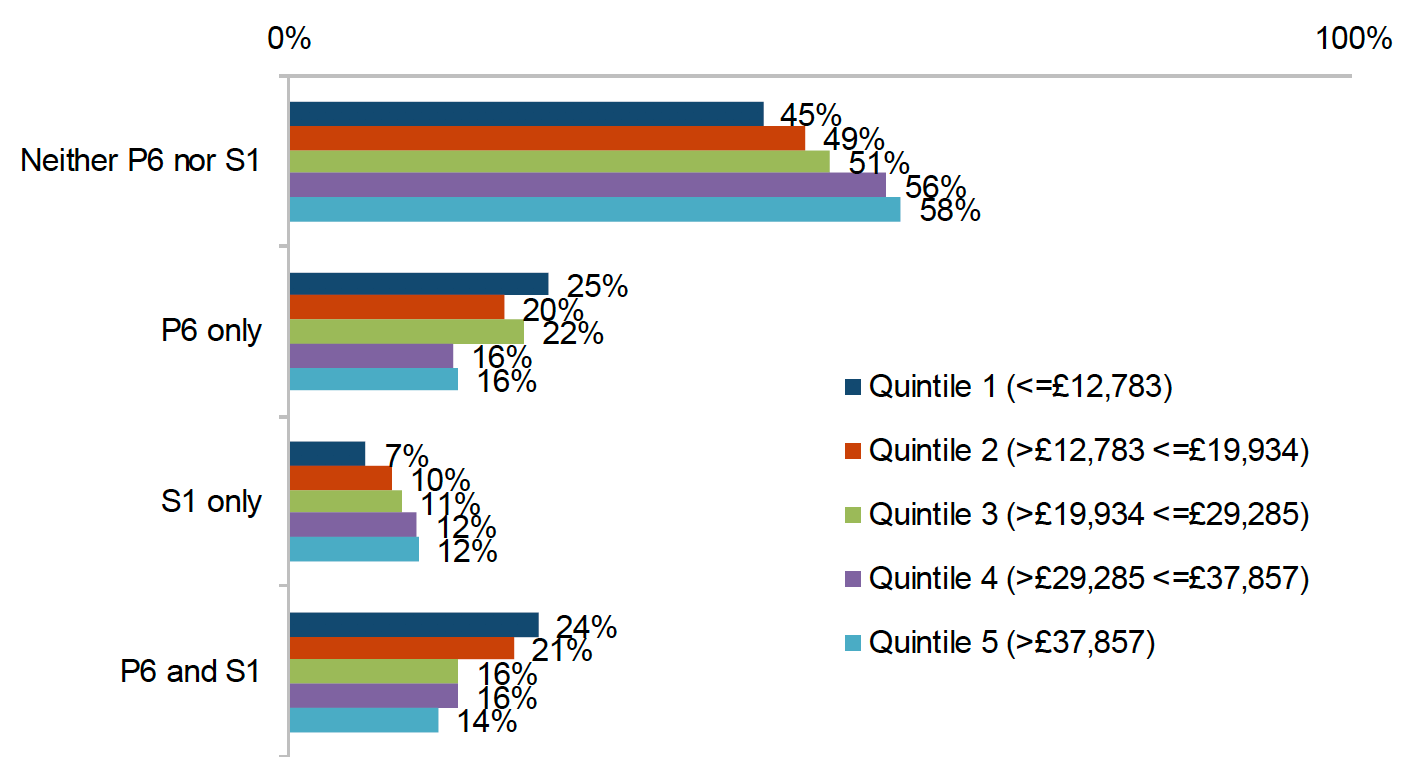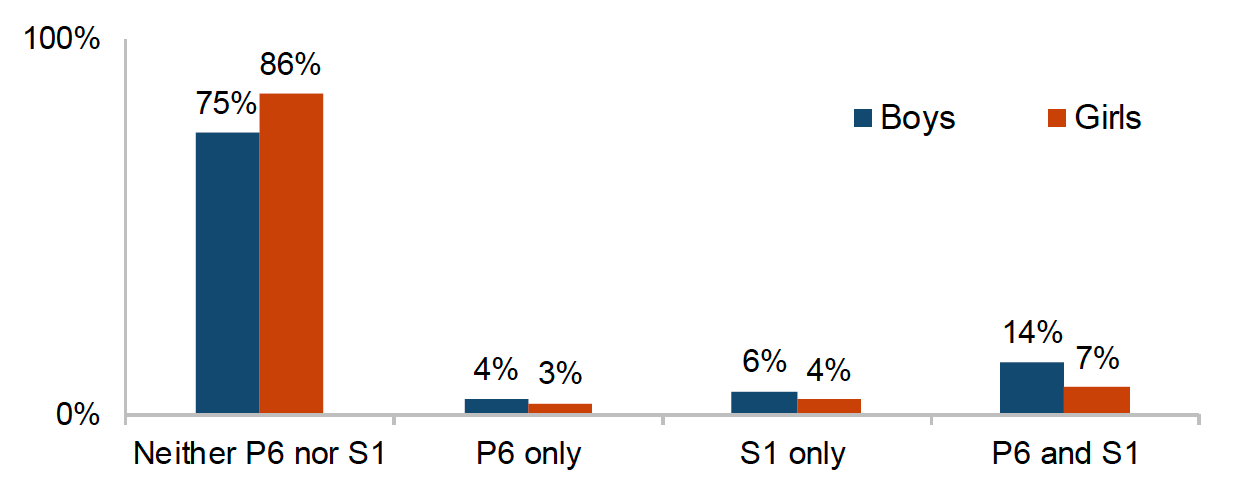Primary to secondary school transitions: analysis
Analysis of experiences relating to the transition from primary to secondary school using data collected from Growing up in Scotland (GUS).
6 Life events during the transition period
6.1. Introduction
This chapter explores the prevalence of developmental and life events experienced by children between primary and secondary school, as well as any associations between these events and changes in cognitive ability. Specifically, it examines experiences of upsetting life events, changes to family composition, friendship difficulties and the identification of having additional support needs shortly before and/or after moving to secondary school.
6.2. Prevalence of developmental and life events
The overwhelming majority of parents (93%) did not report any changes in partnership status over the period considered; 5% of parents reported having separated and a further 3% had a new partner (Table 9‑23). Higher area deprivation and lower household equivalised income were each associated with a greater likelihood of changes in partner status. These changes nevertheless only occurred for a minority of families across all groups, with 91% of those in the highest deprivation quintile reporting no change in status, compared with 96% in the lowest deprivation quintile. However, this difference was more pronounced in regard to income, with 83% in the bottom income quintile reporting no change in partner status compared with 99% in the top quintile. No differences were identified in regard to the child's gender or between rural and non-rural households.
The prevalence of bullying in primary and secondary school was also assessed (Table 9‑24)[31]. Half of children reported being bullied in neither primary nor secondary school, while a fifth said that they were bullied at both time points. Bullying was more common in primary school (38%) than secondary school (28%) (Table 9-26). Children from households in the lowest income quintiles and the highest deprivation quintiles were the most likely to report being bullied in primary school and in both primary and secondary (Figure 6‑1). A different pattern was seen, however, in the proportion of children who report being bullied in secondary school only. For this group, those in the top income quintiles were the most likely to report this being the case, with 12% of this group reporting being bullied only in secondary school, compared with 7% in the bottom quintile. Although the difference between groups in this case was relatively small, it nevertheless remains statistically significant. The same pattern was also apparent in regard to area deprivation.

Note. Data drawn from GUS sweeps 8 and 9. Unweighted base: n=2,469. Numbers indicate weighted percentages.
At each sweep of GUS data collection parents were asked if their child had been identified by their school or another professional as having additional support needs. Where a child had previously been identified as having an additional support need, parents were asked whether or not the child still had this need (or needs, if more than one additional support need had been recorded), and whether the child had been identified as having any further additional support needs. In the penultimate year of primary school (P6), 14% of children had one or more additional support needs. Towards the end of their first year of secondary school, this figure was 15%. Overall, 20% of children had an additional support need at either P6 or S1 or both. Boys were more likely than girls to have additional support needs (25% compared with 14% among girls) (Table 9-25) (Figure 6‑2).

Note. Data drawn from GUS sweeps 8 and 9. Unweighted base: n=2,890. Numbers indicate weighted percentages.
Finally, the number of upsetting life events that had occurred between P6 and S1 were identified (see section 2.6.3). Just over half (54%) of children experienced one or more upsetting life event during this time (Table 9‑27). For children who did experience at least one upsetting life event, the average number of upsetting life events experienced was 1.6. Gender differences were apparent, with 56% of girls having experienced one or more events over the transition period, compared with 52% of boys. Furthermore, as with the other events covered in this chapter, income and household deprivation were shown to be associated with upsetting life events. The greatest difference with respect to this was by income rather than area deprivation, with 67% of children from households in the bottom income quintile experiencing one or more upsetting life events compared with 44% of children in the top income quintile.
6.3. Developmental and life events, and cognitive ability
In order to explore the extent to which the events discussed in this chapter may influence any changes in cognitive ability score, the event measures were added to the full regression model as detailed in section 5.1.
Life events were not associated with the change in ability score and did not attenuate the association between transition experience and changes in cognitive development. This suggests that there is an independent association between changes in cognitive ability and the child's experience of transition to secondary school as measured by the motivation and engagement index[32].
Contact
Email: GUS@gov.scot
There is a problem
Thanks for your feedback